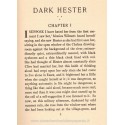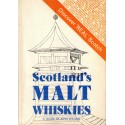Catégories
- Livres rares édités au XVIIe siècle et XVIIIe siècle
- Reliures cuir anciennes, livres avec gravures 19e siècle
- Exemplaires dédicacés par l'auteur, ex-libris, et manuscrits
- Editions numérotées
- Beaux livres grands formats à petits prix
-
Livres de fiction, littérature, théâtre, romans, journaux populaires
-
Manuels scolaires anciens
-
Littérature jeunesse, albums BD enfants et adultes et magazines pour enfants
-
Histoire de l'Antiquité à nos jours, conflits mondiaux et politique
- Religion, spiritualité, mythologie, paranormal
- Animaux domestiques et sauvages, chasse et pêche
-
Tourisme France provinces françaises, géographie, histoire, culture, traditions
-
Pays du Monde, Europe, Amérique, Océanie, Asie, Afrique, les océans
- Sciences naturelles, Botanique, astronomie, sciences physiques, sciences mathématiques
- Marine, transport maritime, navigation de plaisance, bateaux, sous-marins
- Transports trains, automobiles, aviation,
- Techniques, Commerce, Economie, industries et agriculture
-
Livres sur L'Art, antiquités, cinéma, illustrateurs, people, et musique
- Loisirs créatifs, gastronomie, mode, décoration, jeux, bricolage, jardinage
- Santé, sports, bien-être, régimes, la famille, sexualité, médecines naturelles,
- Sociologie, philosophie, ethnologie, questions sociales
- Format poche classés par séries ,Livre de Poche, Folio, Press-Pocket, etc...
- Alte Deutsche Bücher und alte Deutsche Postkarten
- English books and others languages
-
ART, ESTAMPES, GRAVURES ANCIENNES, LITHOGRAPHIES ORIGINALES, AFFICHES
-
CARTES POSTALES, PHILATELIE, IMAGES PIEUSES, ARCHIVES, PAPETERIE
- DISQUES 78 tours RETRO & CLASSIQUE
- BREVE SELECTION DE RARES LIVRES, CARTES POSTALES, ART
Dark Hester, Anne Douglas Sedgwick, 1929 - mother in law, family relationships, English litterature,
Dark Hester, Anne Douglas Segwick (Mrs. Basil de Sélincourt) - "Proverbial the jealousy between a man’s mother and his wife; proverbial the trouble that an old love affair will cause to a new relationship. Yet Author Sedgwick takes the two threadbare situations, weaves bright new colors into the pattern. Clive’s mother, Monica Wilmott, with her golden hair twisted about her head “was like a falcon, a jar of honey, a spray of rosemary.” Victorian at heart, she had, years before, rebelled against the fast vulgarity of the military set in India—but since her husband’s death she had supported herself and her son: the office, the antique shop, the millinery establishment had made her something of a modern. When Clive told her he was marrying an unshackled modern, a newspaper woman, with dark hair brushed straight back like a boy, Monica was shocked, but contrived to ask lightly: ‘Is anybody shackled nowadays, my dear?’ ‘Oh, we all are! . . . People who dress for dinner, I mean, and are presented at Court, and take in the “Quarterly Review”—’ Monica, well bred, was exceedingly cordial to Hester; but Hester was rude with harum-scarum honesty. She swept Clive off to her world of modernistic furniture, and noisy banter, while Monica quietly retired from London to the country. Then Hester, disturbed by the misery she felt in Clive, in Monica, could not leave well enough alone; followed her mother-in-law, and by malicious coincidence found an old lover among Monica’s new friends. Monica, quick to recognize the situation, flared into unaccustomed wrath, disrupting the close understanding between Clive and his wife. Only by the deftest handling did she bring them together again, finding in the process a deep affection and necessity for dark Hester." (source Time) editions Houghton Mifflin Company, The Riverside Press Cambridge, Boston and New York, 1929. #mother in law, #familiy relationships, #english litterature,
Dark Hester, Anne Douglas Segwick (Mrs. Basil de Sélincourt) -
"Proverbial the jealousy between a man’s mother and his wife; proverbial the trouble that an old love affair will cause to a new relationship. Yet Author Sedgwick takes the two threadbare situations, weaves bright new colors into the pattern.
Clive’s mother, Monica Wilmott, with her golden hair twisted about her head “was like a falcon, a jar of honey, a spray of rosemary.” Victorian at heart, she had, years before, rebelled against the fast vulgarity of the military set in India—but since her husband’s death she had supported herself and her son: the office, the antique shop, the millinery establishment had made her something of a modern.
When Clive told her he was marrying an unshackled modern, a newspaper woman, with dark hair brushed straight back like a boy, Monica was shocked, but contrived to ask lightly: ‘Is anybody shackled nowadays, my dear?’ ‘Oh, we all are! . . . People who dress for dinner, I mean, and are presented at Court, and take in the “Quarterly Review”—’
Monica, well bred, was exceedingly cordial to Hester; but Hester was rude with harum-scarum honesty. She swept Clive off to her world of modernistic furniture, and noisy banter, while Monica quietly retired from London to the country. Then Hester, disturbed by the misery she felt in Clive, in Monica, could not leave well enough alone; followed her mother-in-law, and by malicious coincidence found an old lover among Monica’s new friends. Monica, quick to recognize the situation, flared into unaccustomed wrath, disrupting the close understanding between Clive and his wife. Only by the deftest handling did she bring them together again, finding in the process a deep affection and necessity for dark Hester." (source Time)
editions Houghton Mifflin Company, The Riverside Press Cambridge, Boston and New York, 1929. #mother in law, #familiy relationships, #english litterature,
Description : livre relié, couverture cartonnée, 300 pages. format 19,5 cm x 13,5 cm. bon état. signature manuscrite sur la page de garde et la page de titre.























